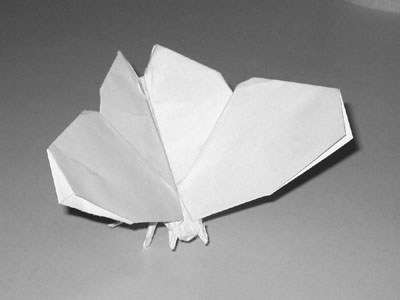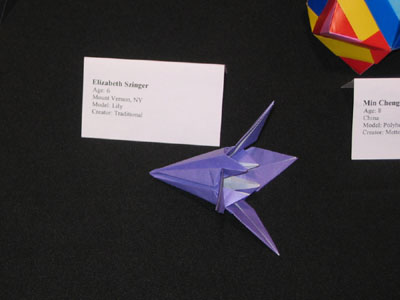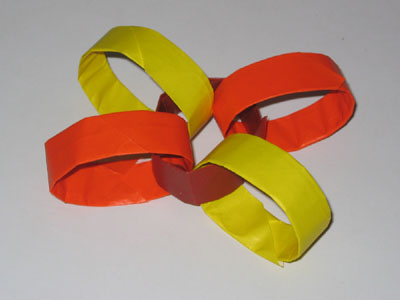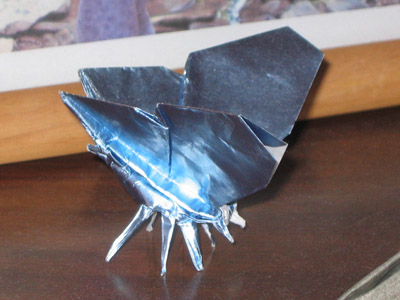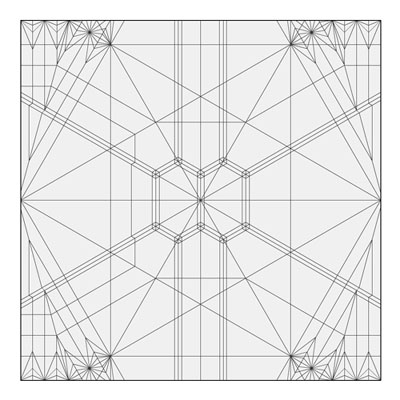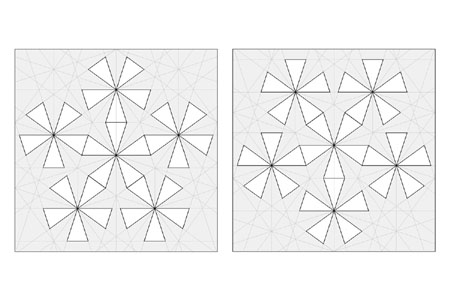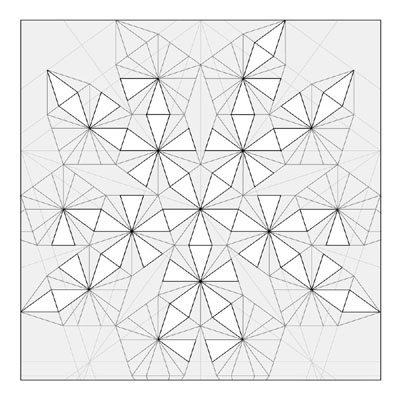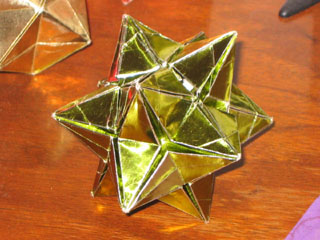Hello all. I’m mainly getting ready for the Origami Conference this week. Folding like a demon in my spare time. Lots of works-in-progress, but no new finished pieces yet. Been trying to finish my ladybug but so far an elegant solution has eluded me. A friend suggested I try and come up with a Moose, so I’ve been looking at the mooses in the books I have. One is by John Montroll and the other by Robert Lang, and their approches couldn’t be more different. John’s is a great example of his classic style, using all 22.5 degree angles and advanced isotopes of the traditional bases. It’s pretty easy to fold, and works well from plain ol’ 10″ kami. I did one on the train today, starting on the way in and finishing it on the way home. Came out really nice. Robert’s is all box pleating, and I’m about half done, and remembering why I don’t fold box pleated models very much, all that overhead. Still, I’m looking forward to finishing it, and it should be nice. Also made out of 10″ kami to be fair.
My own idea is rather different than both of theirs, particularly with regard to the antlers, which is of course where the action is in a moose. I’m thinking of doing something more sculptural, out of 2 large flaps, rather than hiding all those points deep in the model and opening it out at the end, a feature which both my examples share. So mine basically reduces to an 8 point base. Of course I’m not at the level yet where I can fold a model straight from the concept and nail it every time. No, there’s usually a fair amount of experimentation to get there for me. So we’ll see how it goes. If it works, I’ll also have a suitable base to fold the Great Forest Spirit from the movie Princess Mononoke, kicking off my long awaited Miyazaki series.
In all the excitement, there is one new thing I forget to mention: last week I did a punch-in on the ending of the sax solo for Heat Wave, and produced a slightly-less-rough-mix. Enjoy!

